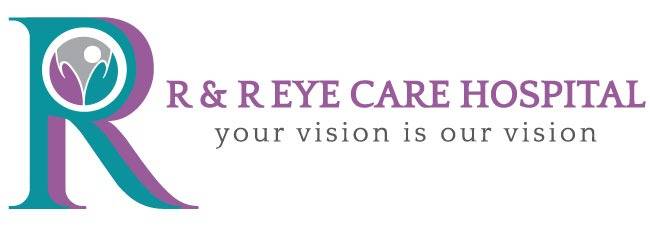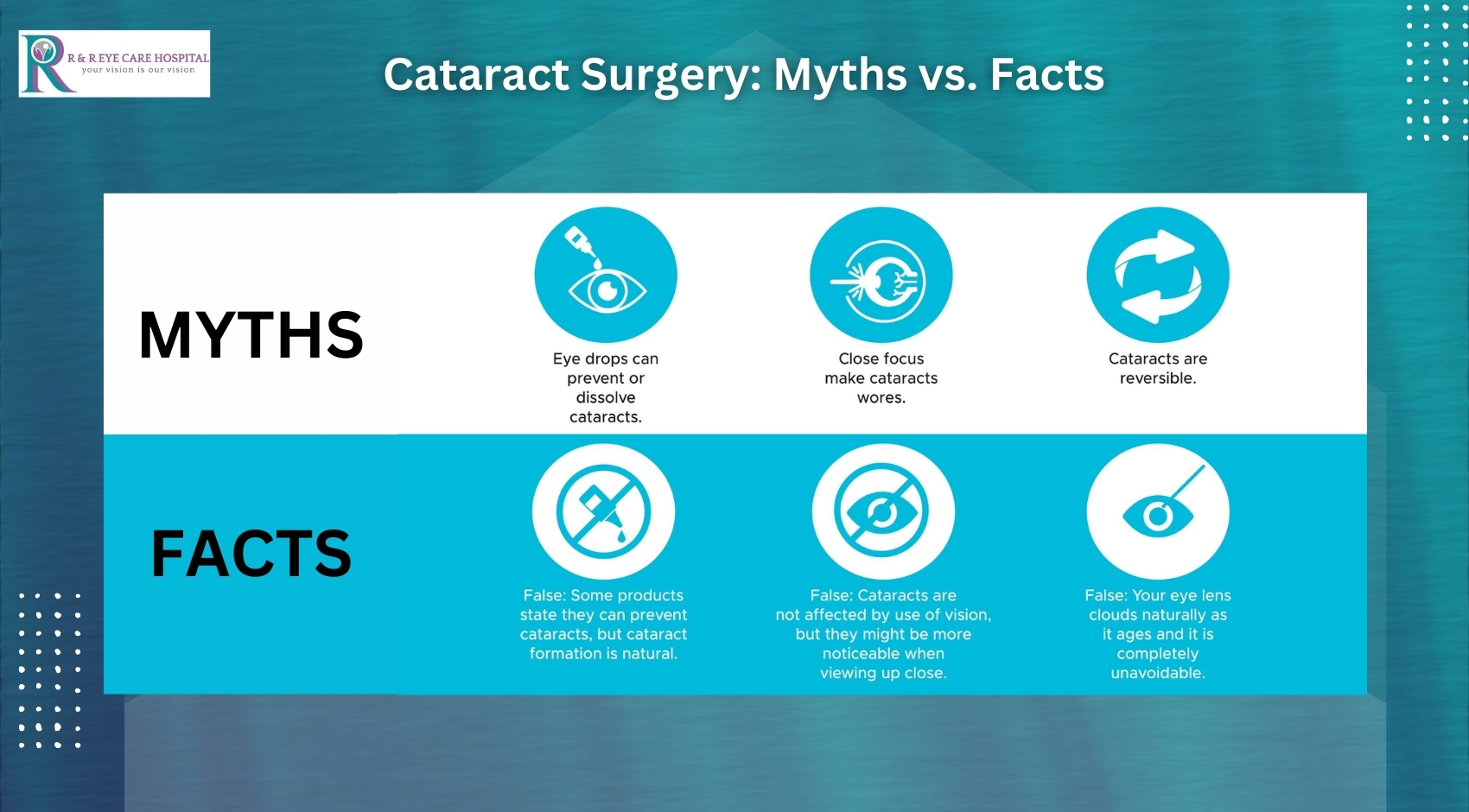Cataracts are a common eye condition, especially among older adults, leading to cloudy vision and, if left untreated, potential vision loss. Thankfully, cataract surgery is a safe and effective procedure that can restore clear vision. However, despite its widespread success, many myths and misconceptions surround cataract surgery. At R & R Eye Care Hospital, we believe that informed patients make the best decisions about their health. In this blog, we’ll debunk some of the most common myths about cataract surgery and present the facts you need to know.
Myth 1: Cataracts Must Be "Ripe" Before Surgery
Fact: One of the most persistent myths about cataract surgery is that the cataract must be “ripe” or fully developed before it can be removed. In reality, cataract surgery can be performed as soon as the cataract starts to interfere with your vision and daily activities. There’s no need to wait for the cataract to reach a specific stage. Early intervention can help you maintain a better quality of life and prevent the complications that may arise from advanced cataracts.
Myth 2: Cataract Surgery Is Only for Older Adults
Fact: While cataracts are more common in older adults, they can affect people of all ages, including younger adults and even children. Factors such as genetics, eye injuries, certain medications, and medical conditions like diabetes can lead to the development of cataracts at a younger age. Cataract surgery is not limited by age; it’s a viable option for anyone whose vision is significantly impaired by cataracts.
Myth 3: Cataract Surgery Is Painful
Fact: Many people fear cataract surgery because they believe it will be painful. However, this is far from the truth. Cataract surgery is typically performed under local anesthesia, meaning your eye will be numbed, and you won’t feel any pain during the procedure. You might experience some mild discomfort or a sensation of pressure, but the surgery itself is generally painless. Most patients report little to no discomfort during or after the procedure.
Myth 4: Recovery from Cataract Surgery Takes a Long Time
Fact: Cataract surgery is one of the most commonly performed surgeries, with a high success rate and a relatively short recovery time. Most patients experience significant improvement in their vision within a few days after surgery. While full recovery can take several weeks, during which you should avoid strenuous activities, the majority of patients are able to resume their normal activities within a few days. Your eye care specialist will provide detailed instructions to ensure a smooth recovery.
Myth 5: Cataracts Can Grow Back After Surgery
Fact: Once a cataract is removed, it cannot “grow back.” During cataract surgery, the cloudy lens of the eye is removed and replaced with an artificial intraocular lens (IOL), which remains clear. However, some patients may develop a condition known as posterior capsule opacification (PCO) months or years after surgery. PCO occurs when the back of the lens capsule (left in place to hold the new lens) becomes cloudy. Fortunately, this condition can be easily treated with a quick, painless laser procedure called YAG laser capsulotomy, which restores clear vision.
Myth 6: Cataract Surgery Is Risky and Complicated
Fact: Cataract surgery is one of the safest and most effective surgical procedures performed today. With advancements in technology and surgical techniques, the procedure has become increasingly refined, with minimal risks. Like any surgery, cataract surgery carries some risks, such as infection, inflammation, or retinal detachment, but these complications are rare and can often be treated successfully if they do occur. The vast majority of patients experience improved vision without any complications.
Myth 7: Glasses or Contact Lenses Will Still Be Needed After Surgery
Fact: While it’s true that some patients may still need glasses or contact lenses after cataract surgery, particularly for reading or close-up work, many patients find that their dependence on corrective lenses is significantly reduced. Modern cataract surgery offers a variety of intraocular lens (IOL) options, including multifocal and toric lenses, which can correct presbyopia (age-related near vision loss) and astigmatism. Your eye care specialist will help you choose the best IOL for your needs, potentially eliminating the need for glasses or contacts.
Myth 8: Cataract Surgery Should Be Delayed as Long as Possible
Fact: Delaying cataract surgery is unnecessary and can even be detrimental to your vision and overall quality of life. Cataracts can progress slowly, but over time they will worsen, making it increasingly difficult to see clearly. Waiting too long for surgery can lead to more severe vision loss, and in some cases, the cataract may become more challenging to remove. Early intervention allows you to enjoy clearer vision sooner and reduces the risk of complications associated with advanced cataracts.
Myth 9: All Intraocular Lenses (IOLs) Are the Same
Fact: Intraocular lenses (IOLs) are not one-size-fits-all. There are different types of IOLs available, each designed to address specific vision needs. The standard monofocal IOL corrects vision at one distance, usually for distance vision, meaning you may still need glasses for reading. However, advanced IOLs, such as multifocal or accommodating lenses, can correct vision at multiple distances, reducing or eliminating the need for glasses. Toric IOLs are available for patients with astigmatism. Your eye care specialist will discuss the options with you to determine the best choice based on your lifestyle and vision goals.
Myth 10: Cataract Surgery Is an Emergency Procedure
Fact: Cataract surgery is usually an elective procedure, meaning it is planned rather than performed on an emergency basis. Cataracts develop slowly, and while they can eventually lead to significant vision impairment, the decision to have surgery is typically based on how much the cataract is affecting your daily life. There’s no need to rush into surgery unless your vision is severely impacted. Your eye care specialist will guide you on the optimal timing for the procedure based on your individual condition.
Conclusion: Separating Myths from Facts
Understanding the facts about cataract surgery can help you make informed decisions about your eye health. At R & R Eye Care Hospital, we are dedicated to providing accurate information and high-quality care to ensure the best outcomes for our patients. If you or a loved one is experiencing vision problems due to cataracts, we encourage you to schedule a consultation with our experienced team. We’re here to answer your questions, dispel any myths, and guide you through the process of restoring clear vision. Trust us to help you see the world more clearly.




Leave A Comment